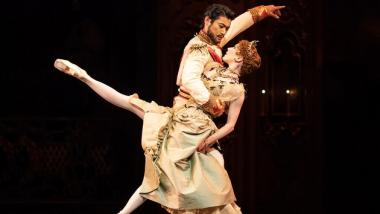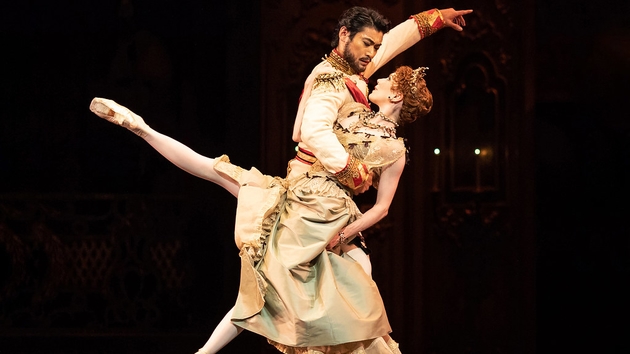
When it comes to dance, Los Angeles often gets a bad rap. In the last few years, however, the scene has been changing. Not only locally --- Los Angeles Ballet is entering its 14th season, Diavolo Architecture in Motion recently celebrated 25 years, and L.A. Dance Project has been gaining a foothold, pardon the pun, since its founding in 2012 by superstar choreographer Benjamin Millepied. The national and international troupes that continue to grace the city’s various stages have also been numerous and include regular appearances by American Ballet Theater, Matthew Bourne’s New Adventures, and Garth Fagan Dance, to name a few.
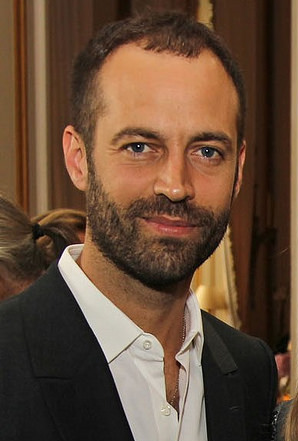
In July, L.A. has nothing less than a veritable terpsichorean feast. Returning for the first time in 24 years, The Royal Ballet, Great Britain’s most prestigious ballet company, will present back-to-back weekends of dance at the Music Center’s Dorothy Chandler Pavilion, both with live music. July 5-7 the troupe performs Mayerling, Kenneth MacMillan’s 1978 masterpiece of sex, drugs, and revolution, followed by “Adès & McGregor: A Dance Collaboration” July 12-13.
The latter program also features two world premieres. The Dante Project (Inferno) set to Thomas Adès’s score, Inferno, conducted by the composer and performed by the Los Angeles Philharmonic, was first heard at Walt Disney Concert Hall in May, and will feature The Royal Ballet, with choreography by Wayne McGregor, dancemaker in residence at The Royal since 2006. The second premiere is an untitled new work by McGregor, set to Adès’s 2008 score In Seven Days, and features pianist Kirill Gerstein and members of Company Wayne McGregor. Also on the bill is the West Coast premiere of Outlier, from 2010. Set to Adès’s 2005 Violin Concerto and performed by Leila Josefowicz, the work’s subtitle is Concentric Paths, and showcases dancers from both troupes.
Adding icing to this delicious dance cake is a site-specific take on Romeo and Juliet at --- of all places --- the Hollywood Bowl, the iconic outdoor amphitheater that opened in 1922 and seats a whopping 18,000. Yes, on July 16, Benjamin Millepied will direct his L.A. Dance Project in what is being billed as “a choreography for dance and camera” in a number of scenes from the tale of star-crossed lovers. Performed in and around various locations of the Bowl to the music of Prokofiev, accompanied by the L.A. Phil under the lively baton of Gustavo Dudamel, the work’s first iteration was seen last October at Disney Hall and promises to be a thrilling experience at the Bowl by virtue of its sheer vastness and bucolic setting.
While the Pavilion is not exactly pastoral, Kevin O’Hare, director of The Royal Ballet since 2012, is certainly thrilled about the troupe’s return to the City of Angels after its decades-long absence. “The Royal really founded our international reputation on touring America,” said O’Hare by phone from the organization’s offices in London. “That’s when they became an international company, and we have this fondness for it, but finances and all of that means [the tours] are few and far between.”
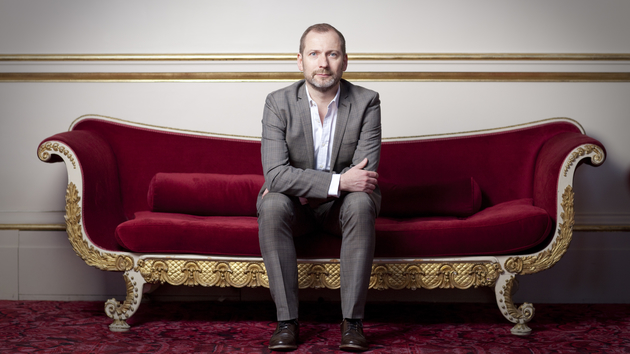
Indeed, the company that was founded in 1931 by Ninette de Valois and became resident ballet company of The Royal Opera House in Covent Garden in 1946, is considered one of the world’s finest. And while O’Hare may have been appointed director of the company in 2012, he joined as company manager in 2004, and had been following McGregor’s rise as both contemporary dancer and choreographer for years before that.
“I remember being blown away by the way he moved and heard he was starting to get interested in classical dance. In 1997, I’d been asked to organize a gala, so I invited Wayne to dance a duet. Then in 2006, when I was company manager, I happened to be in the theater and saw a rehearsal of his new ballet, Chroma. I couldn’t believe what I was seeing, and every time I heard there was a [rehearsal] call, I would sneak down and watch it again.
“Wayne is an amazing man,” O’Hare continued, “and he’s pushed our boundaries in such great ways and involved so many different collaborators, especially since I’ve become director. We have a great relationship and he knows the company so well.”
Chroma, one of McGregor’s signature works, was a game-changer in terms of its physicality. Teeming with a visceral movement vocabulary replete with extreme articulation, undulating upper torsos, and slicing legs, the work is now in the repertory of Alvin Ailey American Dance Theater and recently premiered in Hong Kong. That McGregor style will surely be on display at the Pavilion, with O’Hare saying that the new Adès/McGregor ballet will become a full-evening work at The Royal Opera House next year.
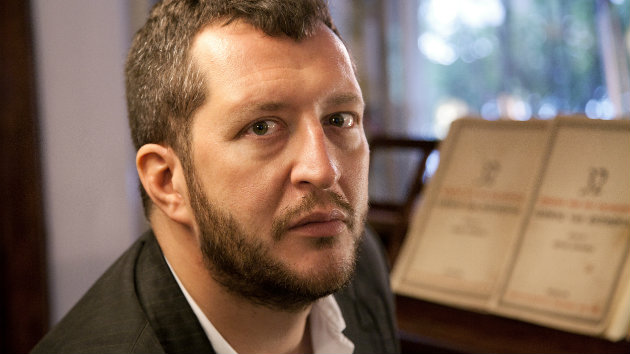
“We’d hoped to do something with Thomas --- and Wayne has choreographed to his music before --- but to have their collaboration, it’s quite a coup, especially for L.A. to have a Royal Ballet first and not at our opera house. We’re doing a premiere in a theater that we don’t know much about, but, as I mentioned, we like to push boundaries.”
While he doesn’t like comparing himself to the legendary Ballets Russes impresario, Sergei Diaghilev, O’Hare’s interest in working with cutting-edge composers, designers, and choreographers is evident. “One of the things I was keen on was commissioning new music and since I’ve been director, I’ve lost count of how many new scores we’ve done,” he explained, “but we are in double figures.”
Inferno, performed in 13 sections, with each representing levels of Dante’s hell, features lots of brass, winds, and even castanets, with shades of Shostakovich, Bernard Herrmann and that titan of Romanticism, Liszt, with Adès describing the music as “a grateful tribute to Franz Liszt, the composer of Hell and demonic music.” The dance, which includes Tacita Dean’s designs, also had a dramaturg, Uzma Hameed, who previously worked with McGregor and The Royal Ballet in the 2015 production, Woolf Works.
O’Hare explained: “Uzma understands Wayne’s work and draws out the salient points in a story that will match his physicality and choreographic voice. It’s not going to be a narrative [where] you walk here and say, ‘I love you.’ It’s much more than that. You need somebody who understands the way Wayne makes dances move to get a feeling across, and she’s somebody that can do that.”
The as yet unnamed second world premiere will feature a video installation by Ben Cullen Williams and was choreographed in conjunction with the dancers, while a press note says that the AI choreography tool was developed in collaboration with Google Arts & Culture Lab. When queried about that, O’Hare laughed and replied, “Don’t ask me to explain this whole AI thing, but I am excited by it, because it sounds like another world completely.”
As for his criteria when programming a concert, O’Hare replied that his considerations have to do with how pieces will work together. “Of course,” he added, “it’s hard when it’s a premiere, but what is helpful is that it’s Wayne and Thomas throughout the program, so it feels like there’s a through-line. The audience is coming because they want to see what Wayne is creating and what Tom is composing --- and they are really committed and hungry and excited for it.”
Presenting the three-act ballet Mayerling the week before the Adès/McGregor program, also makes sense. “Kenneth [MacMillan] was a huge influence,” noted O’Hare, “not only with his choreography, but in the way we present ourselves as a company and how we present our ballets. We really try to tell the story as naturally as we can, and that’s what makes us quite different.”
In fact, according to O’Hare, everyone in Mayerling, which will feature a live orchestra conducted by Koen Kessels, the music director and conductor of The Royal Ballet, is telling that story. “Every ballerina --- Natalia Osipova, Sarah Lamb, Marianela Núñez, and Francesca Hayward --- are all doing these wonderful parts,” added O’Hare, “but everybody onstage, all the characters, whether they’re in the ballroom scenes or are servants, they all contribute to the storytelling. It’s a big, complicated story in a big, searing production.”
From the indelible Bedroom pas de deux between Rudolf and Countess Mary Vetsera in Mayerling to the balcony scene of Romeo and Juliet, there is decidedly common ground. All similarities would seem to end there, however, when French-born Benjamin Millepied, who was a principal dancer with New York City Ballet, performing a mixed repertory over his 16-year tenure, takes over the historic Hollywood Bowl with his 12-member L.A. Dance Project, a troupe known for its fusion of top-notch ballet technique, choreographic innovation and multi-disciplinary collaborations.
But as “R & J” has been embedded in the culture for so long --- nearly all ballerinas worth their tutus aspire to dance Juliet --- Millepied said the saga had not been any kind of touchstone for him. “I never danced in it and it was funny,” he said in a phone conversation, his accented English part of his charm, “because it’s not something I was ever interested in choreographing for the theater. I started to think about it for movies, then started to think about a stage production that would involve live performance and live video.”
Millepied, who began making choreographies while at City Ballet, and in 2002 founded the Danses Concertantes (an erstwhile pick-up troupe in which he performed for about eight years), has made numerous short films and was also director of the esteemed Paris Opera Ballet from 2014-2016. At the Disney Hall performance, he personally wielded a video camera and, literally, followed his performers: Whether swooping in for dancer close-ups backstage at the Hall or documenting them rolling around near the outdoor giant rose created as an homage to Lillian Disney, Millepied’s choreography and filming prowess proved both emotional and innovative.
Explaining that the Bowl production will be an extended version of the piece seen at Disney and will run nearly an hour, with the entire work being premiered in 2020 at La Seine Musicale Paris, after which it will be presented in L.A., Millepied said that he will share some of the filming duties, “so I can also have more of an outside eye. There’s more stage work at the Bowl and more live filming as well,” he explained.
“The Bowl is incredibly special, and I love going there,” Millepied continued, “but the video feed and multiple cameras will [instead] be from a single camera and viewpoint throughout the entire piece. And that’s really unique in terms of how video has been used in the Bowl before, but you will see some [shots] of Dudamel conducting.”
The choreographer/filmmaker, who makes his home in Los Angeles with his wife, actor Natalie Portman, and their two young children, said that working with Dudamel and the L.A. Phil has been exceptional. “Obviously, we’re very lucky because our dance company has the rare opportunity to perform with such an orchestra and conductor. It’s certainly a remarkable opportunity for us.
“The beauty of live music is the experience of the moment,” he added, “and it’s the Bowl, so what happens in a live performance --- the energy of the players and the people in the audience --- it’s irreplaceable.”
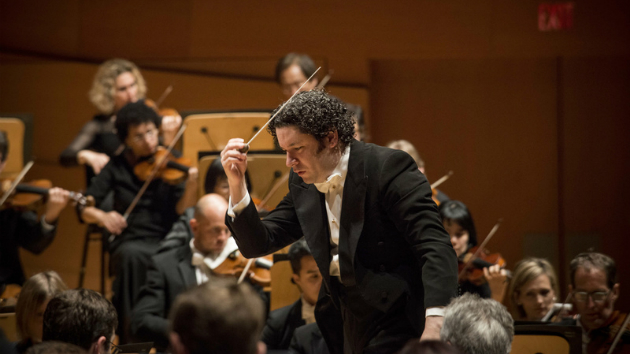
Never having been interested in presenting the Shakespeare tragedy in the classical sense, Millepied nevertheless finds the music “incredible” and likens it to film music, “or music that inspired a lot of composers in old Hollywood movies.” His dancers, on the other hand, will not be cut from swaths of glamorous cloth, but will again be clad mostly in street clothes and sneakers, as they were last fall.
The lead roles will be danced by Janie Taylor and David Adrian Freeland, Jr., because, Millepied pointed out, “Janie is at the end of her career and we need to fully appreciate every time she steps on stage, so I wanted to give her that opportunity. And she and David have also worked together.”
Exceedingly tight-lipped about the production and not wishing to give much away, Millepied said that, “the idea is for you to be surprised by what we do and how we do it.” But he did acknowledge that the fight scene between Mercutio and Tybalt will take place in the audience, although he doesn’t necessarily think of this creation as custom-choreographed for the Bowl.
“It wasn’t the space, in particular, it was the project itself. I didn’t think of it as site-specific, because everything is interesting when you use the world as your set. We think of the theater as a building, but the truth is, it’s quite wonderful to use [the Bowl] stage that has a look and an aesthetic and history and atmosphere that can be quite inspiring. That’s something I’m always interested in, and also when you do that, it leads you to create something that’s not for the happy few, but a performance for the public.”
As for the challenges of performing at the Bowl, Millepied, who makes his feature directorial debut next year with Carmen, they are not necessarily unsurmountable, nor even outside the norm. “There are technological challenges and the lack of rehearsal challenges, and there are always a few challenges in new venues, but we’re excited about that. It’s going to be a unique night and I hope that everything goes well.”
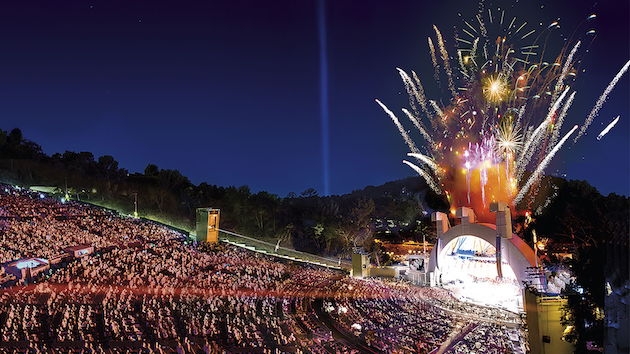
While there may be no surprises in the denouement of Romeo and Juliet, when the final chords of Prokofiev’s stirring score bring the proverbial curtain down on this frequently performed, doomed romance, in Millepied’s hands, the death scene, which was performed in Disney Hall’s elevator last fall, will, he said, “take place in the backstage area that I’m converting to a party room.”
And what a party those few weeks in Los Angeles are guaranteed to be --- for dance, theater and music aficionados alike. So, grab your tissues and picnic baskets (Bowl goers, only, though Music Center patrons can drink and dine on the outer areas of the currently-being-refurbished patio) and get ready for a lot of dreamy --- if often mercurial --- summertime cultural fare.

